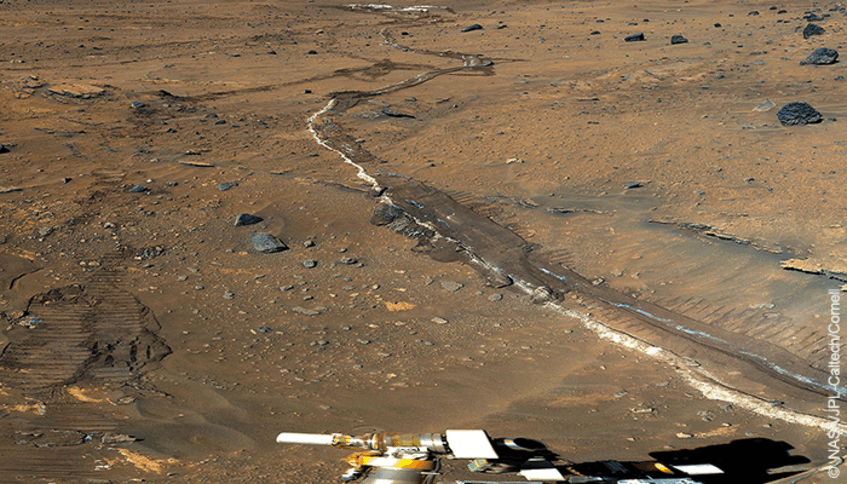FWF Project P 34337-N: Unraveling the Mysterious 'LH-Kieserite' on Mars

FWF Project P 34337-N: Unraveling the Mysterious 'LH-Kieserite' on Mars
FWF Project P 34337-N; Post-Doc: Dominik Talla, Project Management:
Manfred Wildner (mineralogy and crystallography);
Project duration: 4 years; project start September 2021.
The exploration of our solar system is one of the most exciting undertakings of mankind at present. Among the various strategies to approach this goal are the exploration of other planets and their moons, not only to study their topography but also the distribution and nature of rocks and minerals found there, which give us insight into their formation and related processes. In this respect, the proven occurrence of hydrated sulfate minerals is of great importance. Not only do these contain considerable amounts of chemically bound water, but they are part of the local hydrologic cycle and, moreover, can extend the liquid state below the usual freezing point, thus providing a possible habitat for simple life forms. On the icy moons of Jupiter and Saturn, for example, sulfates contribute to the existence of liquid oceans beneath their icy surfaces. On Mars, these minerals store large amounts of water and form part of the planetary water cycle.
It is therefore of paramount importance to unravel the nature of these sulfates on the celestial body in question and to study their properties in the laboratory. As part of a recently completed project, we have now discovered clues about the potential presence in the solar system of a previously overlooked group of magnesium sulfate minerals, summarily abbreviated 'MHSH', including the mysterious 'LH kieserite'. Their properties vary with both their water content and chemical elements that partially replace magnesium, causing changes in their spectral and chemical behavior. If we could artificially produce MHSH on Earth and accurately characterize its varying properties in the laboratory, these data would be extremely valuable in evaluating measurements on other planets – measurements that are so far only accessible as reflectance spectra from satellites or directly by current rover missions, as in the case of the planet Mars.
Thus, the stated mission of our research project can be summarized as follows: 1) to refine the provisional synthesis method for MHSH and the variation of its composition according to the expectations for planets and moons; 2) to study and document in detail the spectroscopic and crystallographic properties as a function of chemical composition, using infrared and Raman spectroscopy as well as X-ray diffraction; and 3) to perform these experiments also at low temperatures and high pressures, as they are relevant for the surface resp. the interior of celestial bodies in our solar system. The results obtained will serve as reference values for comparison with data from Mars or the icy moons, and will enable us to deduce even the chemical composition of planetary surface samples from transmitted infrared or Raman spectra.
